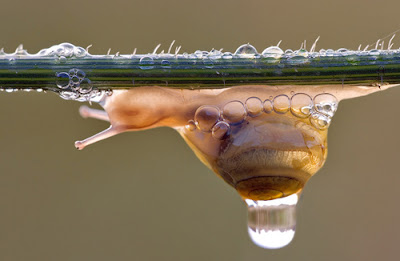A huge 18-foot green
anaconda (Eunectes murinus) was captured by a group exploring the Rewa River in Surinam. Where are Ice Cube, J-Lo, and Owen Wilson when you need them?
Niall McCann, a 29-year-old biologist from Wales, Robert Pickles, and their guides found the anaconda while trekking through a section of the Rewa River never before surveyed by scientists. They captured the snake in 2009, but didn't release photos until lately."The animals there had never seen people before so you could get incredibly close to them,”.The squad dotted the large serpent on the river bank, but didn't undertake it at primary.
"When you primary see amazing of that size you just don't know how it will react. Three weeks later, the anaconda was still in the similar spot. The explorers had gained knowledge catching caiman and smaller anacondas since their first come across with the giant, and felt sure they were up to the 18-foot long challenge.
"We exhausted about 20 minutes preparing the landscape so we could give confidence it to move inland, we didn't want it to go into the river as it could have runaway," ."It would make bigger out then coil, ready to strike, then make bigger out and coil again. I said, 'right, next time it stretches I'm going to go for it.' It started to stretch out and I just leapt on top of it with both hands behind its head, my knee on its back and the other chaps piled on behind me,"
"It was a struggle for the first 30 seconds or so as it tried to move its head from side to side. It tried to scratch at us then Ash, the head guide, came round the front and grabbed it by the jaws as I lifted it up -- wrapping its jaws with tape so it could no longer bite us
The snake wranglers made sure the anaconda couldn't escape with its mouth taped, which would have been a death sentence for an animal with no appendages. The team then measured it and released it.
At 18 feet, the anaconda might be one of the best ever measured.
A
17 foot 1 inch (521 cm ) long female that weighed
215 lb (97.5 kilograms), was recognized by Jesus Antonio Rivas in The Life History of the
Green Anaconda (Eunectes murinus), with Emphasis on its Reproductive Biology. Other information of anacondas reaching 24-27 feet have been report by reliable sources. Though rumor exist of anacondas attainment lengths of more than 30 feet, herpetologists doubt the accuracy of these claims.






